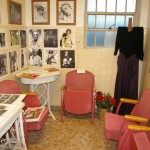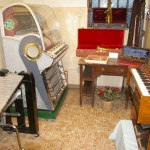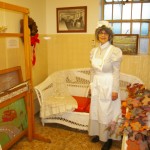At that first meeting in 2000, hospital staff, patients and citizens organized themselves into a group they called the Grave Concerns Association. They discussed plans about how to restore the hospital cemetery and bring honor and dignity to the forgotten. Patient advocates, genealogical societies, gardening groups, and cemetery restoration experts offered advice and counsel. Work parties were organized. Memorials were held to honor the dead and reveal the names of those loved ones lost to history.
In 2001, the Earth shook the hospital grounds. Buildings were damaged and hundreds of patients were moved around to other wards. During demolition, old artifacts had to be moved to an abandoned ward. This afforded an opportunity to the GCA volunteers to organize those artifacts into an historical museum that would complement the work done by the Grave Concerns Association (GCA).
Since 2004, the WSH historical museum has been toured by hundreds of visitors that include students, elected officials, the public, and hospital patients and staff. On September 13, Kathleen Benoun — from the Washington State Library/Institutional Library Services– hosted an open-house at the museum for visitors in honor of National Recovery Month and Heritage Happens Month — Pierce County.








